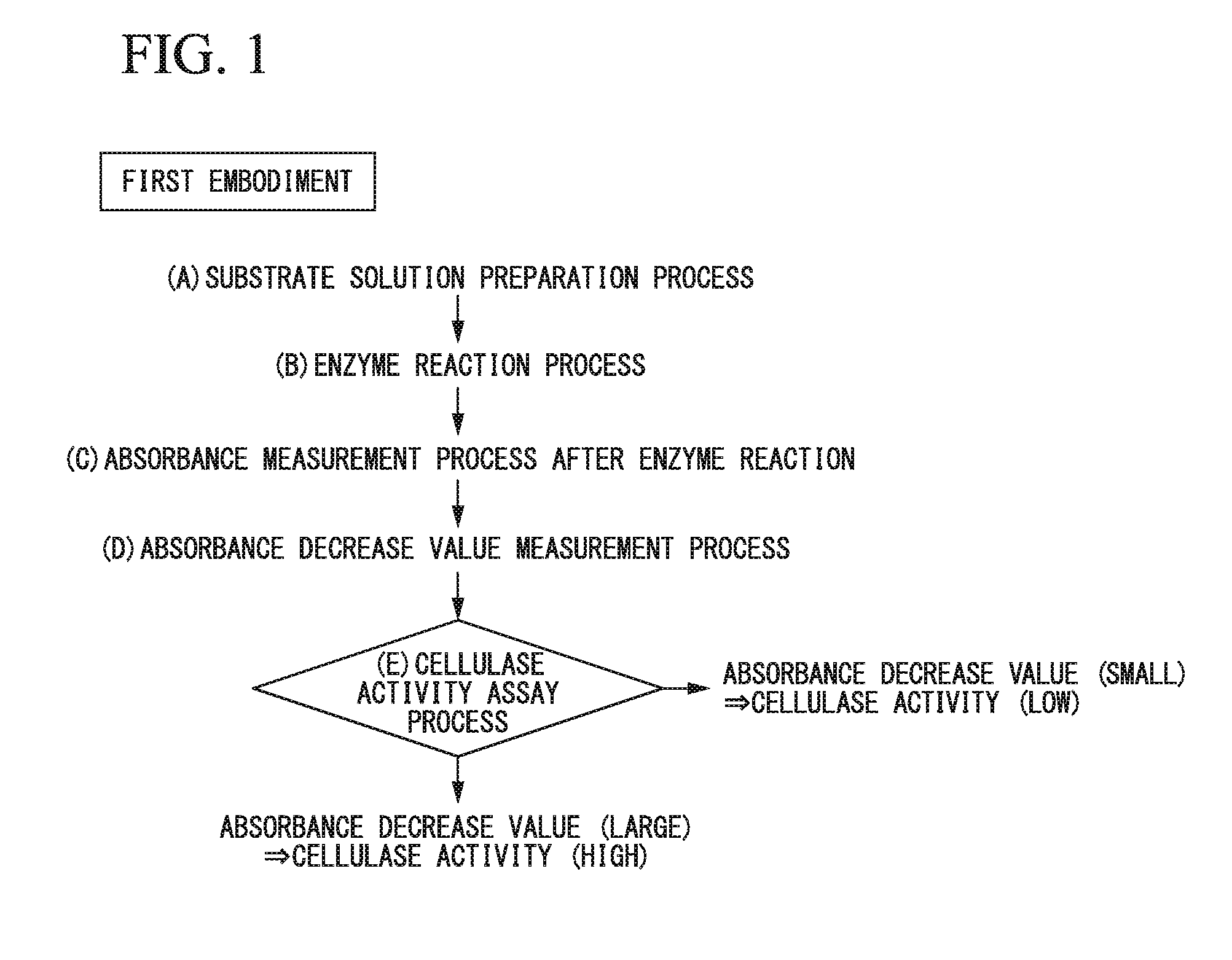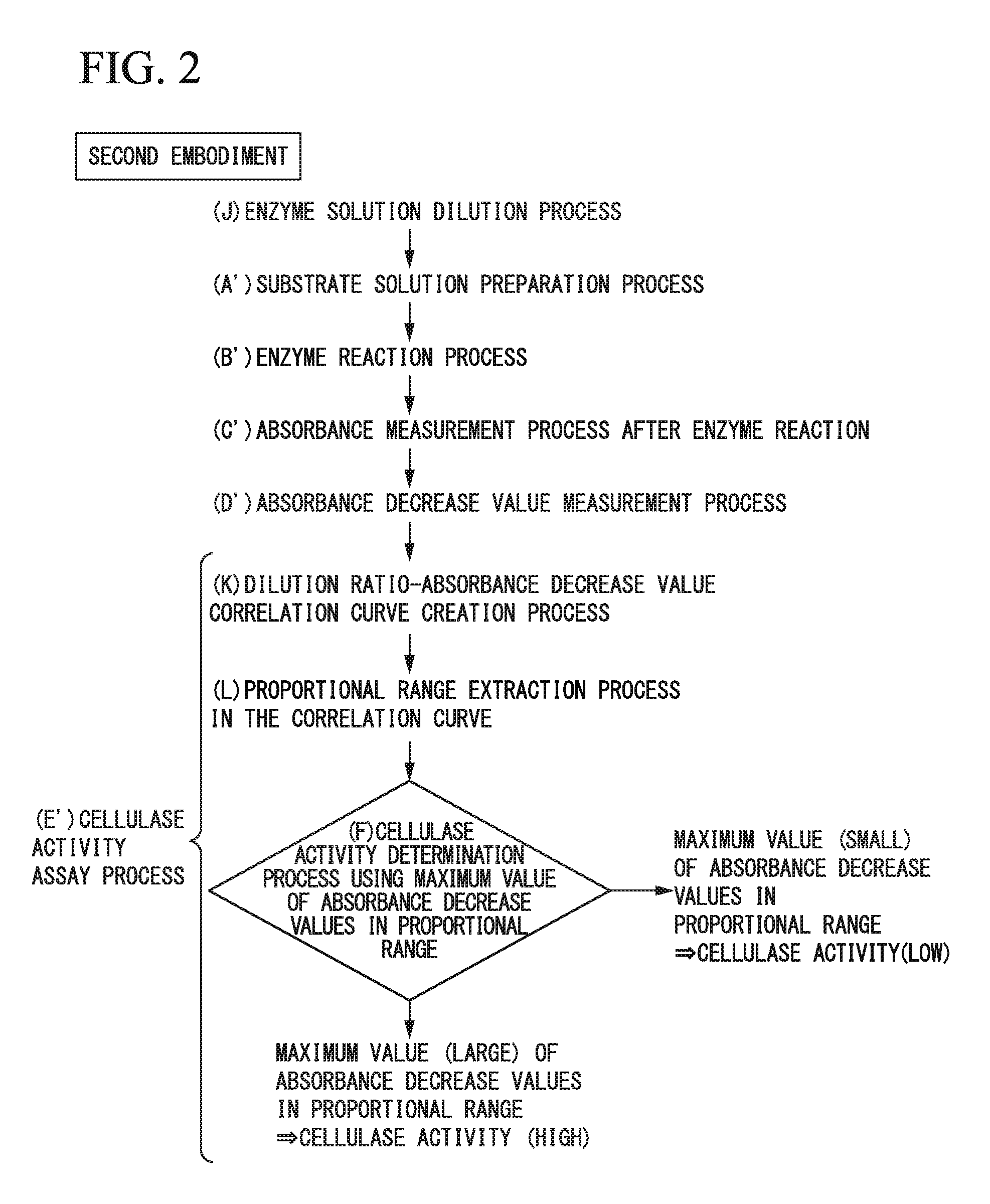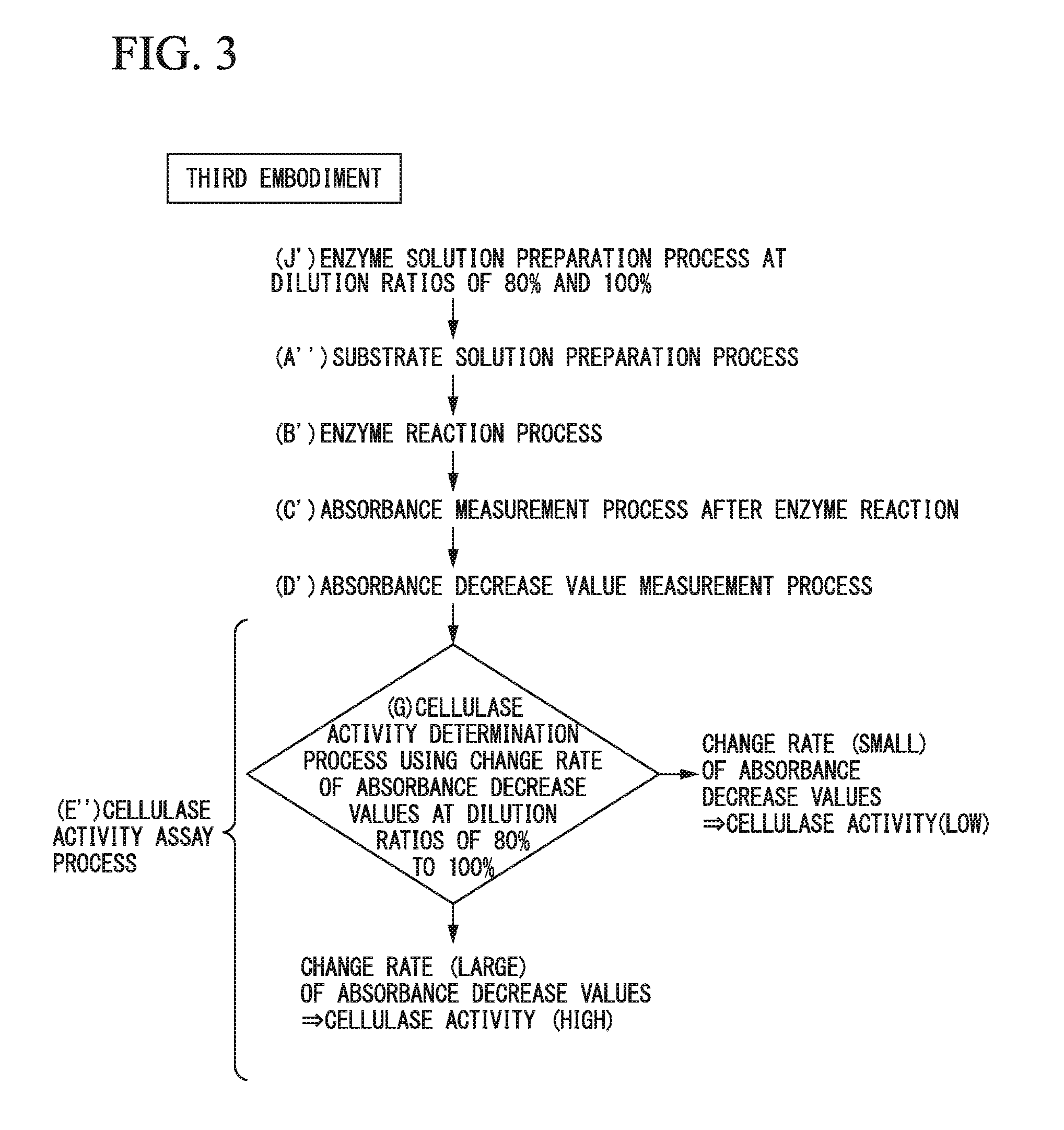Method for assaying cellulase activity, screening method using assaying method, and high-performance cellulase-producing bacteria selected using screening method
a cellulase activity and assaying method technology, applied in the field of assaying cellulase activity, can solve the problem of inability to evaluate a culture solution of mutation-producing bacteria in which the ratio of each component enzyme is unknown, and achieve the effect of simple and accurate method for assaying cellulase activity, high saccharification performance, and simple and accurate method
- Summary
- Abstract
- Description
- Claims
- Application Information
AI Technical Summary
Benefits of technology
Problems solved by technology
Method used
Image
Examples
second embodiment
[0107]A method for assaying cellulase activity of a second embodiment of the present invention will be described with reference to FIG. 2. First, six or more diluents, which have different dilution ratios for each identical enzyme solution with respect to different kinds of enzyme solutions to be assayed, are prepared (process J). Next, six or more substrate solutions, which have an identical absorbance measured at an identical wavelength and in which cellulose is dispersed at an identical concentration, are prepared, and the absorbance of each of the substrate solutions is measured (process A′). Processes B′ to D′ performed next are the same as the processes B to D of the first embodiment. Furthermore, the cellulase activities of the enzyme solutions are assayed (process E′).
[0108]In the assay performed in the process E′, correlation curves between the dilution ratios of the enzyme solutions and the absorbance decrease values are created (process K).
[0109]A range in which the dilut...
third embodiment
[0119]A method for assaying cellulase activity of a third embodiment of the present invention will be described with reference to FIG. 3. First, diluents, which are at dilution ratios of 80% and 100% for each identical enzyme solution with respect to different kinds of enzyme solutions to be assayed, are prepared (process J′). Next, two or more substrate solutions, which have an identical absorbance measured at an identical wavelength and in which cellulose is dispersed at an identical concentration, are prepared, and the absorbance of each of the substrate solutions is measured (process A″). Processes B″ to D″ performed next are the same as the processes B to D of the first embodiment and processes B′ to D′ of the second embodiment.
[0120]In the assay performed in the process E″, it is determined that the cellulase activity becomes higher as the change rate of the absorbance decrease values at the dilution ratios of 80% to 100% of the enzyme solutions (process G) becomes larger. To ...
fourth embodiment
[0122]A method for assaying cellulase activity of a fourth embodiment of the present invention will be described with reference to FIG. 4. In the present embodiment, it is determined that enzyme solutions, which are determined to be an enzyme solution with high cellulase activity in the process F of the second embodiment and to be an enzyme solution with high cellulase activity in the process G of the third embodiment, are enzyme solutions with the highest cellulase activity, including the configurations of the second embodiment and the third embodiment. The enzyme solutions which are determined to have high cellulase activity in the present embodiment also have a correlation with saccharification performance.
[0123]In a case where the enzyme solutions which are determined to have high cellulase activity are different in the second embodiment and the third embodiment, it is determined that an enzyme solution having a large absorbance decrease value in the dilution ratio of 100% is an...
PUM
 Login to View More
Login to View More Abstract
Description
Claims
Application Information
 Login to View More
Login to View More - R&D
- Intellectual Property
- Life Sciences
- Materials
- Tech Scout
- Unparalleled Data Quality
- Higher Quality Content
- 60% Fewer Hallucinations
Browse by: Latest US Patents, China's latest patents, Technical Efficacy Thesaurus, Application Domain, Technology Topic, Popular Technical Reports.
© 2025 PatSnap. All rights reserved.Legal|Privacy policy|Modern Slavery Act Transparency Statement|Sitemap|About US| Contact US: help@patsnap.com



